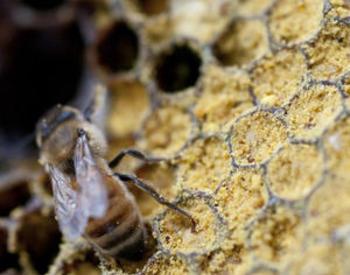On a day at the end of April, I was collecting bees on streamside golden currant shrubs (Ribes aureum) along a trail in a popular birding area in southeast Oregon. The steady flow of late afternoon walkers were all enthusiastic birders who were in the area to watch the spring avian migration. With binoculars in hand and eyes searching for birds, everyone who passed by stopped to ask about what I was doing, and their keen interest led to a series of great conversations.
Although I got to practice my Oregon Bee Atlas “elevator introduction” numerous times, their questions delved much deeper. One woman told me she had been walking along wondering if anyone was paying attention to the insects and was thrilled that I was. A botanist from Seattle got so excited by our discussion of bees that he later sought me out in the campground to show me several amazing photos he subsequently took of bees he found.
In retrospect, it made perfect sense that birders would be a natural audience for informal bee outreach, but I had not anticipated how many conversations I would have and how interested the birders would be about bees.



















